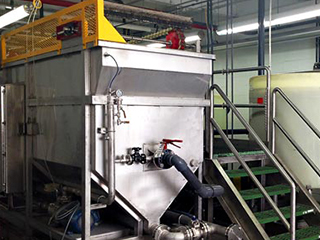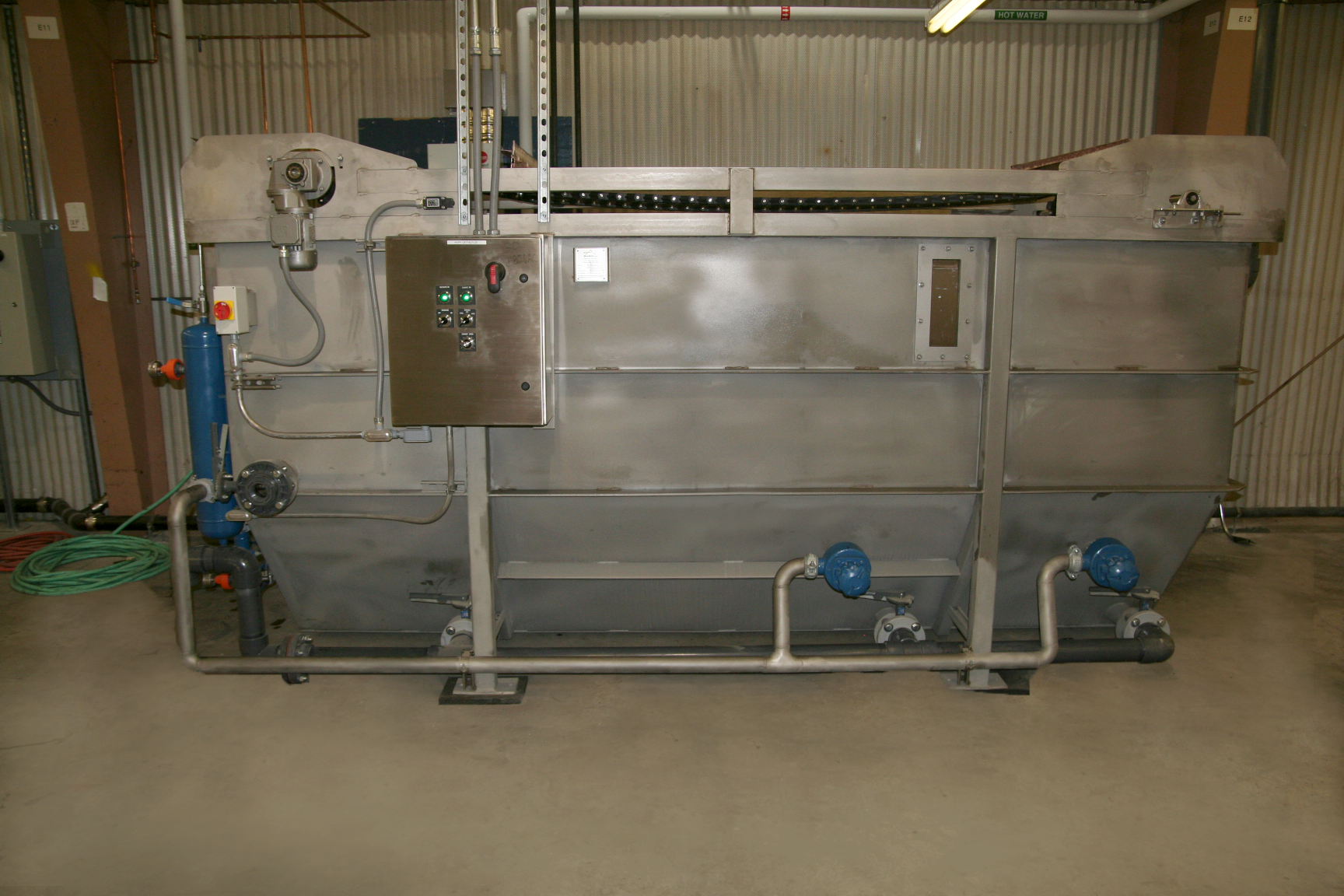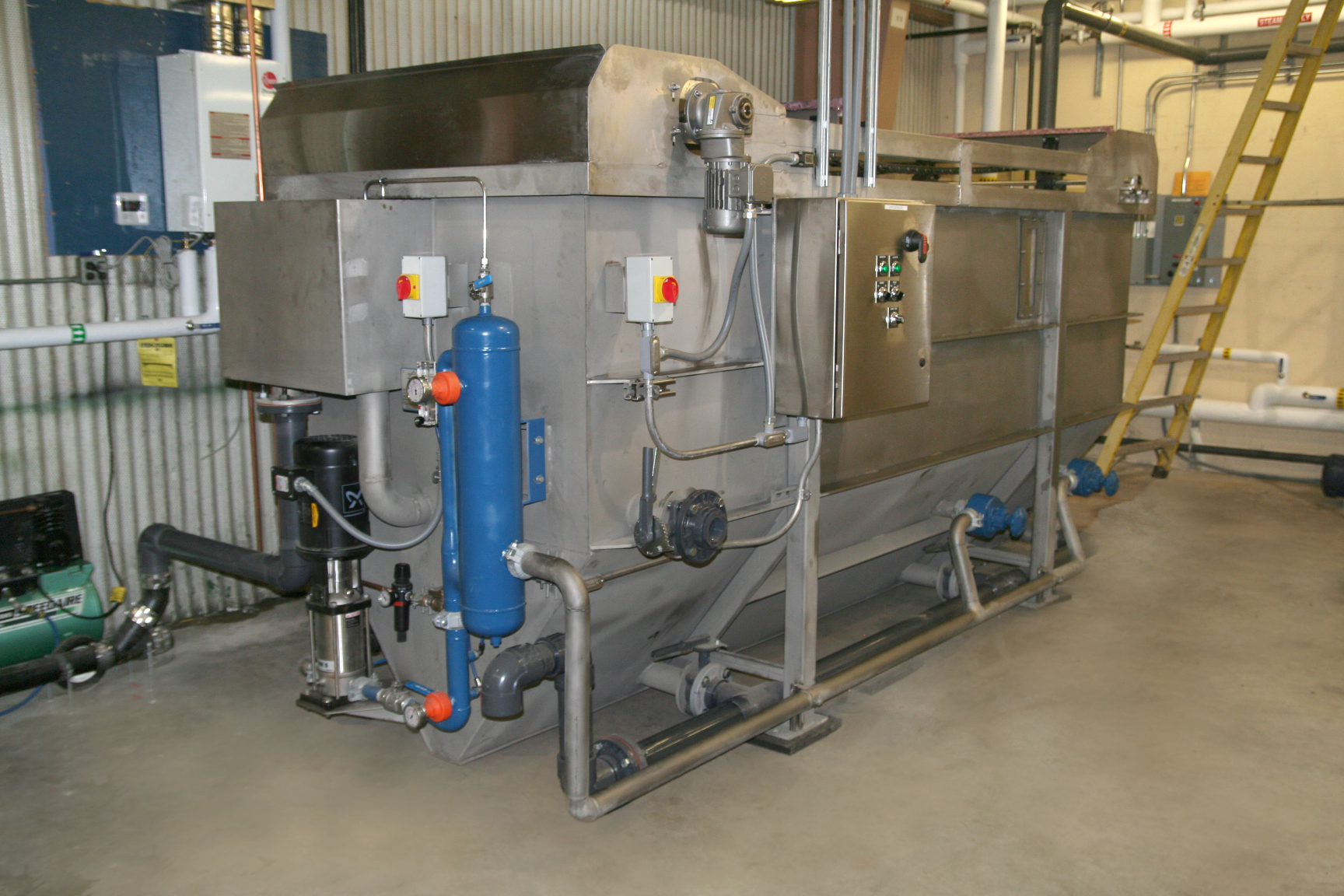Dissolved Air Flotation (DAF)
Air Flotation offers process advantages over such processes as filtration, precipitation, or adsorption using natural and synthetic sorbents and media. The advantages include better treated-water quality, rapid startup, high rate operation, and a thicker sludge, shorter sludge residence time in a secondary clarifier stage and flexibility in changing the operation parameters as the result of active sludge separation.
DAF bubbles are formed by a reduction of pressure of a super air saturated water stream at pressures usually higher than 3 atm. In industrial practice, the supersaturated water is forced through precise needle valves for air control, and clouds of 0.02–0.10 mm bubbles in diameter are subsequently produced and mixed with the incoming waste stream. Once the saturated stream pressure is reduced and the two streams mixed the bubbles attach to the materials being separated and then floats to the water surface. Modern flotation devices and schemes exhibit both high throughput and efficiency.
Products removed: solids, oils, fuels (vehicle/jet), fuel oils, hydraulic fluids, immiscible machining oils, lube oil, transmission fluid, vegetable based oils, animal/vegetable by-products and many other products.



